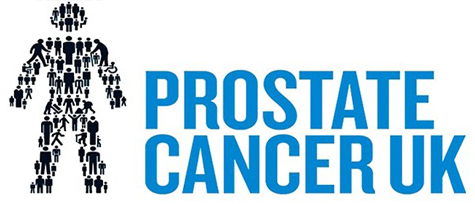
Terry's Story
I was diagnosed in 1995, at the age of 53 following a PSA test during a routine health check.
My GP referred me to an urologist, and, after a biopsy and MRI scan, I had a radical prostatectomy. Pathology results indicated a good chance of a cure, as the cancer was contained within the prostate gland and with no spread to lymph nodes or other parts of the body. Following the surgery, though, the PSA never reduced, from the initial 10ng/ml, to undetectable.
Between 1995 to 2003 my PSA increased, slowly, from greater than 0.1 to greater than 1.0 leading to the conclusion that I had re-occurrence of the cancer and my urologist passed me on to a urological oncology consultant at the Royal Marsden Hospital (RMH).
First the RMH pathologist reviewed the pathology specimens from my original operation eight years earlier and the Gleason score was revised to 4+3=7. This indicated some risk of disease progression, which was what had occurred. I went through a 7 week course of salvage radio-therapy in 2004 preceded by, and concurrent, with the usual Zoladex injections.
I had a period, immediately after radiotherapy, and after Zoladex injections stopped, when my PSA, from a very low start, was doubling every four months. This later stabilised to a doubling period of 13 months. I was keen to delay taking hormone treatment, for as long as it was sensible, in order to delay side effects such as muscle and bone density loss. The general protocol, at the time, was to start treatment at a PSA or around 5 but results of intermittent hormone treatment trials were becoming available and the PSA level set for the restart of treatment in these trials was typically 10.
We decided to set 10 as the level for me to start drug treatment. In the event, though, with the relatively slow doubling time, and the fact that CT scans were showing no change in terms of affected tissue, the start of treatment was delayed until my PSA rose to 20. It reached this stage in January 2012.
Hormone treatment (Antigen Deprivation Therapy)
My consultant prescribed bicultamide (Casadex), as it generally has fewer side effects than Zoladex, together with a weekly Tamoxifan tablet to control breast swelling. During my time on intermittent treatment the RMH protocol changed from 6 months on, with a new cycle when the PSA reached the starting level again, to a 3 months on, 3 months off, cycle to reduce toxicity. I had 5 cycles of intermittent treatment between January 2012 and June 2015 when the off-period maximum PSA reached 41. The intermittent treatment was continued longer than usual because CT and bone scans were showing no tissue change. A PET/CT Choline scan, at this time showed no activity. This was both bad news and good news. Good news, because it meant, as my consultant described it, no near future problems. Bad news, because there was no potential to use new local radiotherapy treatments as there was nothing to which it could be directed.
Continuous treatment with bicultamide then continued until November 2016 when the PSA was shown to have doubled to 4.8 over 6 months. The treatment was then changed to 3 monthly Zoladex injections. This did not reduce the PSA but progression slowed to a doubling rate of about 12 months. My prostate cancer was now Castration Resistant, meaning that it could continue to grow with just the testosterone produced by other glands in the body. Between November 2016 and September 2018, in addition to 3 monthly PSA checks I had three more PET/CT scans two with Choline radiotracer dye and one with PSMA. None have shown any activity thus there was no potential for radiotherapy intervention. The main next stage drug interventions: enzulatimide or abiteraterone, and chemotherapy are only approved for metastatic cancer. In September though, I started on a low dosage steroid: Dexamethasone. My PSA test in December 2018 showed that the level had reduced from 15 to 6.3, effectively to the level of 18 months earlier. Monitoring continues at 3 monthly intervals.
Living Well with and beyond Cancer
Living Well With and Beyond Cancer is one of the 4 threads of the National Cancer Strategy. The Group committee has been actively trying to improve the facilities for this within Mid-Sussex. The aspects I apply to my own living well with cancer are:
Exercise: trials, this century, have shown the benefits of this to prostate, as well as other, cancer patients. Currently, in the absence of any local supervised exercise programmes for cancer patients I achieve about five cardiac rehabilitation exercise sessions, both gym based and circuit training, a fortnight. These are for those who have had cardiac events and are focused on cardio-vascular exercises with recovery periods of resistance exercise. By paying equal attention to the resistance exercises, especially in gym sessions, I hope, to counter the muscle and bone density loss caused by the hormone treatments.
Supplements. I started to take pomegranate juice daily, shortly after I completed radiotherapy.
A cohort trial undertaken with about 30 patients in California, had shown a increase in PSA doubling time for people, like me, who had raising PSA levels after surgery and radiotherapy. I changed to a supplement in capsule form: POMI-T, which contains, in addition to pomegranate extract, broccoli, green tea, and turmeric. An NHS controlled trial had shown good results, in terms of increased PSA doubling time, for this supplement. In addition I have vitamin D prescribed to counter bone-density loss
December 2018.
I was diagnosed in 1995, at the age of 53 following a PSA test during a routine health check.
My GP referred me to an urologist, and, after a biopsy and MRI scan, I had a radical prostatectomy. Pathology results indicated a good chance of a cure, as the cancer was contained within the prostate gland and with no spread to lymph nodes or other parts of the body. Following the surgery, though, the PSA never reduced, from the initial 10ng/ml, to undetectable.
Between 1995 to 2003 my PSA increased, slowly, from greater than 0.1 to greater than 1.0 leading to the conclusion that I had re-occurrence of the cancer and my urologist passed me on to a urological oncology consultant at the Royal Marsden Hospital (RMH).
First the RMH pathologist reviewed the pathology specimens from my original operation eight years earlier and the Gleason score was revised to 4+3=7. This indicated some risk of disease progression, which was what had occurred. I went through a 7 week course of salvage radio-therapy in 2004 preceded by, and concurrent, with the usual Zoladex injections.
I had a period, immediately after radiotherapy, and after Zoladex injections stopped, when my PSA, from a very low start, was doubling every four months. This later stabilised to a doubling period of 13 months. I was keen to delay taking hormone treatment, for as long as it was sensible, in order to delay side effects such as muscle and bone density loss. The general protocol, at the time, was to start treatment at a PSA or around 5 but results of intermittent hormone treatment trials were becoming available and the PSA level set for the restart of treatment in these trials was typically 10.
We decided to set 10 as the level for me to start drug treatment. In the event, though, with the relatively slow doubling time, and the fact that CT scans were showing no change in terms of affected tissue, the start of treatment was delayed until my PSA rose to 20. It reached this stage in January 2012.
Hormone treatment (Antigen Deprivation Therapy)
My consultant prescribed bicultamide (Casadex), as it generally has fewer side effects than Zoladex, together with a weekly Tamoxifan tablet to control breast swelling. During my time on intermittent treatment the RMH protocol changed from 6 months on, with a new cycle when the PSA reached the starting level again, to a 3 months on, 3 months off, cycle to reduce toxicity. I had 5 cycles of intermittent treatment between January 2012 and June 2015 when the off-period maximum PSA reached 41. The intermittent treatment was continued longer than usual because CT and bone scans were showing no tissue change. A PET/CT Choline scan, at this time showed no activity. This was both bad news and good news. Good news, because it meant, as my consultant described it, no near future problems. Bad news, because there was no potential to use new local radiotherapy treatments as there was nothing to which it could be directed.
Continuous treatment with bicultamide then continued until November 2016 when the PSA was shown to have doubled to 4.8 over 6 months. The treatment was then changed to 3 monthly Zoladex injections. This did not reduce the PSA but progression slowed to a doubling rate of about 12 months. My prostate cancer was now Castration Resistant, meaning that it could continue to grow with just the testosterone produced by other glands in the body. Between November 2016 and September 2018, in addition to 3 monthly PSA checks I had three more PET/CT scans two with Choline radiotracer dye and one with PSMA. None have shown any activity thus there was no potential for radiotherapy intervention. The main next stage drug interventions: enzulatimide or abiteraterone, and chemotherapy are only approved for metastatic cancer. In September though, I started on a low dosage steroid: Dexamethasone. My PSA test in December 2018 showed that the level had reduced from 15 to 6.3, effectively to the level of 18 months earlier. Monitoring continues at 3 monthly intervals.
Living Well with and beyond Cancer
Living Well With and Beyond Cancer is one of the 4 threads of the National Cancer Strategy. The Group committee has been actively trying to improve the facilities for this within Mid-Sussex. The aspects I apply to my own living well with cancer are:
Exercise: trials, this century, have shown the benefits of this to prostate, as well as other, cancer patients. Currently, in the absence of any local supervised exercise programmes for cancer patients I achieve about five cardiac rehabilitation exercise sessions, both gym based and circuit training, a fortnight. These are for those who have had cardiac events and are focused on cardio-vascular exercises with recovery periods of resistance exercise. By paying equal attention to the resistance exercises, especially in gym sessions, I hope, to counter the muscle and bone density loss caused by the hormone treatments.
Supplements. I started to take pomegranate juice daily, shortly after I completed radiotherapy.
A cohort trial undertaken with about 30 patients in California, had shown a increase in PSA doubling time for people, like me, who had raising PSA levels after surgery and radiotherapy. I changed to a supplement in capsule form: POMI-T, which contains, in addition to pomegranate extract, broccoli, green tea, and turmeric. An NHS controlled trial had shown good results, in terms of increased PSA doubling time, for this supplement. In addition I have vitamin D prescribed to counter bone-density loss
December 2018.



midsussexprostate.uk - info@midsussexprostate.uk




